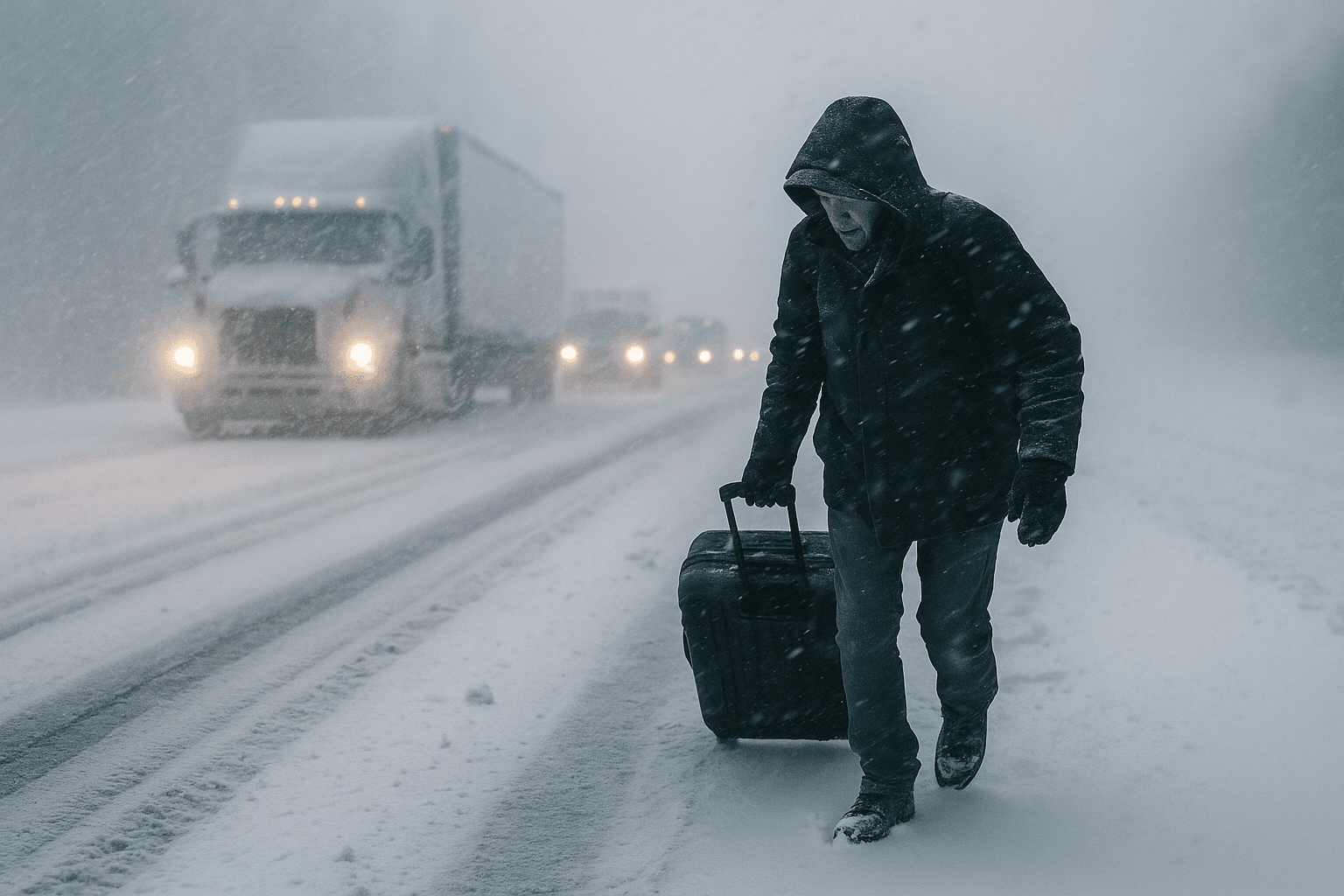Blizzard Warnings, Whiteouts Threaten Thanksgiving Travel Across Northern Plains and Great Lakes
A powerful winter storm is producing heavy snow, gale force winds and whiteout conditions across the northern Plains, Upper Midwest and Great Lakes on Thanksgiving Day, raising the prospect of widespread travel disruptions and power outages. The system highlights risks to vulnerable communities, strained emergency services and longstanding gaps in infrastructure and preparedness that can make storms a deeper public health crisis.

A strong storm system moving across the north central United States is producing heavy snow, high winds and areas of whiteout or near blizzard conditions on Thanksgiving Day, prompting National Weather Service offices to issue Blizzard Warnings, Winter Storm Warnings and Winter Weather Advisories across portions of Minnesota, Wisconsin, Michigan’s Upper Peninsula, northern Iowa and parts of the Dakotas. The Weather Prediction Center says the system will produce intense lake enhanced snow downwind of the Great Lakes and gusty northerly winds that could create blowing snow and significant travel disruption through the holiday.
Forecast discussions from federal and regional offices highlight the risk of snowfall rates of one to three inches per hour in localized bands, with wind gusts to 45 to 60 miles per hour in some locations. Those conditions carry a high likelihood of widespread hazardous travel, whiteout conditions that can immobilize roads within minutes and possible power outages as fallen trees and downed power lines damage distribution infrastructure. Local National Weather Service offices are advising residents to avoid travel during peak snowfall and wind, to prepare emergency kits and to check state department of transportation and 511 resources for road conditions.
The immediate public health implications are multiple and acute. Emergency medical services and rural hospital systems face the prospect of delayed response times as roads become impassable, while emergency departments may see an increase in cold related injuries, vehicle crash trauma and carbon monoxide poisoning from improvised heating. Power outages can be life threatening for people who rely on electrically powered medical devices, and long outages exacerbate risks for older adults, people with mobility impairments and low income households that lack backup heat or alternative shelter options.
The storm also spotlights disparities in infrastructure and emergency preparedness. Rural counties and some tribal communities in the region often have sparser road maintenance resources, longer transport times to hospitals and fewer options for shelters or warming centers. Low income neighborhoods in regional population centers face higher vulnerability when power and transit services are disrupted, and decades of underinvestment in grid resilience and affordable housing leave some residents with fewer safe choices during extreme weather.

Public health officials and local emergency managers typically coordinate with state departments of transportation, utilities and social service agencies to open shelters, prioritize road clearing on critical routes and deploy warming resources where possible. The storm underscores the need for sustained investment in resilient power systems, reliable public transit for essential workers, and policies that expand access to emergency planning resources for those most at risk.
As the storm moves through the region, officials urge residents to heed warnings, avoid nonessential travel and prepare for interruptions to power and communications. For many communities, the holiday will be defined less by travel plans than by how well families and local systems can cope with the sudden, severe conditions and protect the most vulnerable among them.


